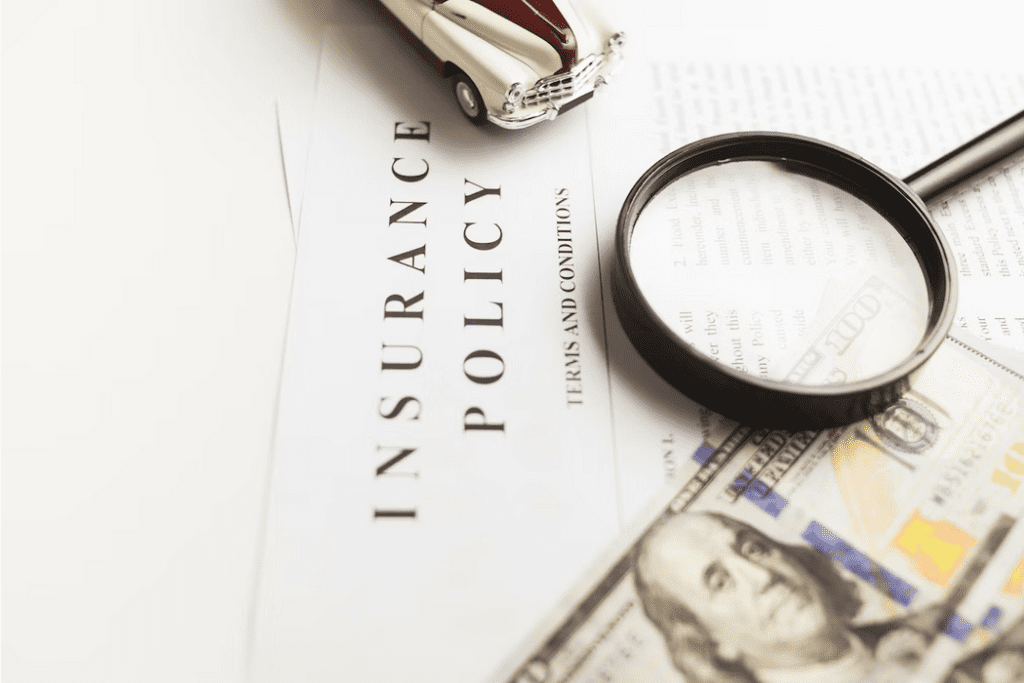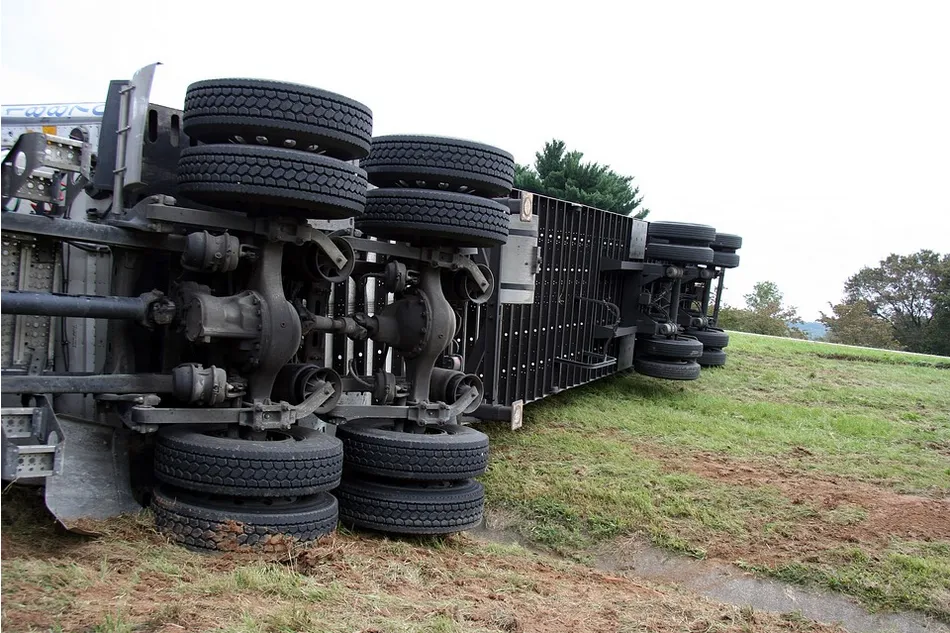Trucks are a common means of transportation on today’s roads, but when an accident involving a truck occurs, the consequences can be serious.
This section provides an overview of truck accident injuries and claims, including types of injuries, establishing liability, documenting losses, filing a claim with an insurance company, preparing for a lawsuit, and calculating damages.
It is important for those involved in a truck accident to understand the potential medical, financial, and legal implications of the accident in order to protect their rights.
In the event of a truck accident, an injured party may be entitled to compensation for medical expenses, lost wages, and other damages. To receive this compensation, an injured party must start by establishing the liability of the other party in the accident. It is then important to document all losses associated with the accident, including medical bills, lost wages, and other out-of-pocket expenses.
After documenting losses, a claim should be filed with the insurance company and the injured party should prepare for a potential lawsuit. Damages must then be calculated in order to determine the amount of compensation to which the injured party may be entitled.
Types of Truck Accident Injuries
Truck accidents can result in a variety of different injuries ranging from minor to severe.
Common injuries may include broken bones, cuts, and bruises.
Severe injuries may include traumatic brain injuries, paralysis, and amputations.
Long-term consequences of truck accident injuries can include chronic pain, disability, and mental health issues.
Common Injuries
With the increasing prevalence of road traffic incidents, common injuries sustained as a result of such events often require medical attention and may have long-term implications.
Common injuries caused by truck accidents include fractures, sprains, concussions, whiplash, and soft tissue injuries. Fractures are broken bones, and can range from minor to severe, depending on the force of the impact. Sprains are tears in ligaments, which can cause pain, swelling, and difficulty moving the affected area. Concussions are head injuries due to a blow to the head, and may cause confusion, memory loss, dizziness, and even loss of consciousness. Whiplash is a neck injury caused by rapid back-and-forth movement of the head, and can cause stiffness, pain, and difficulty concentrating. Soft tissue injuries are injuries to muscles and tendons, and can cause bruising, swelling, and pain.
The severity of these injuries will depend on the speed and force of the accident, as well as the safety measures taken by the driver.
Recovery may be longer or shorter than expected, depending on the severity and type of injury. In some cases, the injury may not be immediately apparent, but may become more severe over time. It is therefore important to seek medical attention as soon as possible after a truck accident.
Treatment may include rest, physical therapy, pain medications, and surgery, depending on the type and severity of the injury. Additionally, those affected may be able to seek compensation for medical expenses, lost wages, and other damages.
Severe Injuries
Severe injuries sustained in truck accidents can have long-term implications and may require extensive medical attention.
Types of severe injuries that may occur in truck accidents include:
- Traumatic brain injuries, such as a concussion
- Spinal cord injuries leading to partial or full paralysis
- Amputation of a limb
- Severe burns, fractures, or lacerations
- Internal organ damage or internal bleeding
Long-term Consequences of Truck Accident Injuries
The long-term consequences of truck accident injuries may include physical, emotional, and financial impacts that can profoundly affect a person’s quality of life.
Physically, truck accident injuries can range from minor cuts and bruises to serious spinal cord injuries, traumatic brain injuries, and amputations. These conditions may require long-term medical care, physical therapy, and lifestyle modifications.
Emotionally, truck accident injuries can lead to issues such as depression, anxiety, and Post Traumatic Stress Disorder. This can impact a person’s ability to work, interact with family and friends, and enjoy leisure activities.
Financially, truck accident victims may face extensive medical bills, as well as lost wages due to inability to work. Furthermore, long-term disability, modifications to homes or vehicles, and other expenses may be incurred. All of these factors can significantly reduce a person’s quality of life.
It is essential for those affected by truck accidents to seek legal advice from a qualified attorney to ensure they receive the compensation they are entitled to.
An experienced attorney can help determine the best course of action for the victim and their family to ensure they receive the compensation they need to cover the long-term effects of their injuries. Furthermore, a qualified attorney can provide the legal support necessary to pursue a fair settlement or a favorable court ruling.
Establishing Liability
Establishing liability in the case of a truck accident involves the identification of the at-fault party, the gathering of evidence to support the claim of liability, and the proof of negligence.
To identify the at-fault party, it is important to consider all parties involved in the accident, such as the truck driver, the trucking company, and any other third parties.
Gathering evidence for liability requires a review of the accident scene, an analysis of the truck driver’s logbook, and any relevant data from the truck’s black box.
To prove negligence in a truck accident, one must demonstrate that the at-fault party failed to meet the standard of care in the operation of the vehicle.

Identifying the At-Fault Party
Determining liability for the incident is an integral part of the process when assessing the effects of a vehicular event.
In the case of a truck accident, identifying the at-fault party can be difficult as there may be multiple potential liable parties involved. The vehicle operator, vehicle owner, and other parties such as a loading company, trucking company, or truck manufacturer could all be responsible depending on the circumstances.
In order to identify the at-fault party, a thorough investigation is necessary. Evidence such as the police report, witnesses’ testimonies, and physical evidence must be examined to determine the cause of the accident.
Additionally, an analysis of the vehicle’s maintenance and safety records may reveal any negligence that may have contributed to the accident. Ultimately, the investigator must determine which of the parties had a duty of care to the victim and which party breached that duty, leading to the accident.
Gathering Evidence for Liability
Compiling evidence to assess liability for a vehicular event requires a comprehensive and meticulous investigation to identify the responsible party.
In order to determine the liable party, evidence from the scene of the accident must be gathered and analyzed. This can include statements from witnesses, photographs of the accident scene, and any other relevant documents or materials.
In addition to evidence from the scene, a thorough investigation of the vehicles involved in the incident may be necessary. This can include an examination of the damage, the current condition of the vehicles, and any maintenance records or other documentation for the vehicles.
The collection of evidence and information is an important step in determining responsibility for a truck accident. All information should be properly documented and preserved for use in the legal proceedings that may follow.
Accident reconstruction experts may be necessary to analyze the evidence and help determine fault. By conducting a thorough investigation of the incident and gathering all available evidence, the responsible party can be identified and the injured parties may be able to seek compensation for their damages and losses.
Proving Negligence in Truck Accidents
In order to prove negligence in a vehicular event, a detailed evaluation of the evidence must be conducted. This must include an analysis of the driver’s behavior, the condition of the vehicle, and the road conditions at the time of the accident.
In truck accidents, a thorough assessment of the truck driver’s state of mind and the documentation of the truck’s maintenance records is especially important in determining liability. The driver’s negligence may be proven if evidence shows that the driver was distracted or impaired, or if there was a mechanical failure in the truck that the driver failed to address.
Additionally, if the driver was operating the truck in a reckless manner, such as speeding or not following traffic laws, this can also be used as evidence to prove negligence. Furthermore, any evidence that a trucking company failed to adhere to federal or state regulations, such as the truck’s weight limit, can also be used to prove negligence.
Lastly, if the road conditions or weather were a factor in the accident, this must also be taken into account when evaluating the evidence. All of these factors must be thoroughly evaluated in order to determine who is at fault for the accident.
Documenting Losses
When discussing losses associated with a truck accident, it is important to consider both economic and non-economic losses.
Economic losses refer to tangible financial losses such as damage to vehicles, medical expenses, and lost wages due to missed work.
Non-economic losses are intangible losses such as pain and suffering, loss of quality of life, and emotional distress.
Understanding both types of losses is essential for developing an effective claim strategy.
Economic Losses
Compensatory damages for economic losses associated with motor vehicle collisions can be difficult to calculate.
The economic losses incurred in a truck accident can include:
- Income loss due to inability to work
- Medical expenses
- Damage to property
To accurately assess the economic losses, it is important to have a full understanding of the individual’s property, liabilities, and income.
For instance, if the individual was employed prior to the accident, the court will need to examine the individual’s salary and calculate the amount of income they would have earned if the accident had not occurred.
Additionally, medical records and other documents may be required to accurately assess the cost of medical treatments and other expenses incurred after the accident.
In some cases, experts may need to be consulted in order to come to an accurate assessment of economic losses.
Non-Economic Losses
Motor vehicle collisions can also result in non-economic losses, such as pain and suffering, loss of enjoyment of life, and emotional distress. These losses are often difficult to quantify and can have a long-lasting impact on the victim.
Pain and suffering could include physical pain, mental anguish, or both, and can lead to a decrease in quality of life due to limitations in physical activities or emotional stress.
Loss of enjoyment of life can result from a diminished capacity to participate in activities one enjoyed prior to the accident, including social, recreational, and occupational activities.
Finally, emotional distress could include anxiety, fear, depression, or any other emotion caused by the accident. These non-economic losses can have a significant impact on a victim’s life, and are often taken into account when determining damages in a truck accident injury claim.
In many cases, these losses are more difficult to calculate than economic losses, such as medical bills and lost wages, as they are subjective and open to interpretation. However, an experienced attorney can use evidence such as medical records, testimony from family and friends, and expert opinion to prove the existence and extent of these losses and to ensure that victims are adequately compensated.
Filing a Claim with the Insurance Company
With the potential for significant financial losses, it is essential to understand the process of filing a claim with an insurance company. Following these steps can help ensure the process goes smoothly and efficiently:
- Locate the insurance policy and determine if coverage is available for the accident.
- Gather all necessary documentation, including the police report, photos of the scene, and medical records.
- Contact the insurance company to file the claim and provide the collected documents.
- Monitor the progress of the claim and follow up with the insurance company as needed.
To ensure the best outcome, it is important to understand the policy coverage, have all necessary documents on hand, and stay in communication with the insurance company. The process of filing a claim can be complex, but having the right documents and staying organized can help ensure a successful claim.

Preparing for a Lawsuit
In the event that the insurance company does not provide an adequate settlement, legal action may be necessary to seek further compensation. Taking legal action after being injured in a truck accident requires proper preparation and understanding of the process. Obtaining the necessary evidence and compiling the records of the incident is essential in order to make a strong case. This includes collecting copies of medical records, police reports, and any other documents related to the accident. Additionally, attending all court hearings and being available for any depositions is necessary.
When filing a lawsuit, it is important to understand the legal process and the applicable laws. Consulting with a lawyer is recommended in order to understand the legal rights of the plaintiff and the possible outcomes of the case. Furthermore, understanding the types of damages that can be sought in a truck accident lawsuit is essential. These damages may include medical bills, lost wages, and pain and suffering.
| Possible Damages | Compensatory | Punitive |
| Medical Bills | Yes | No |
| Lost Wages | Yes | No |
| Pain and Suffering | Yes | No |
Calculating Damages
The calculation of damages in a truck accident claim is a complex process, involving the determination of both economic and non-economic damages.
Economic damages refer to the direct costs incurred by the victim, such as medical bills, lost wages, and property damage, while non-economic damages refer to the intangible costs such as pain and suffering, mental anguish, and loss of consortium.
Evaluating and quantifying these damages requires a careful review of all evidence and an extensive knowledge of the legal process.
Economic Damages in Truck Accident Claims
Calculations of economic damages associated with motor vehicle incidents can be complex and challenging. When it comes to economic damages in truck accident claims, there are a variety of factors that must be taken into consideration.
These include:
- The cost of medical bills and rehabilitation services.
- Lost wages related to the accident.
- Loss of future earning capacity.
- Property damage.
These damages can vary significantly depending on the severity of the accident and the individual’s circumstances. In many cases, an experienced lawyer can help individuals calculate their economic damages and ensure they receive fair compensation.
In addition, it is important to remember that non-economic damages, such as pain and suffering, can also be included in a truck accident claim.
Non-Economic Damages in Truck Accident Claims
When it comes to motor vehicle incidents, non-economic damages can also be included in the settlement and can be just as significant.
Non-economic damages refer to the subjective, intangible losses that an individual may suffer as a result of a truck accident. These losses can include pain and suffering, physical disability, mental anguish, emotional distress, loss of consortium, and loss of enjoyment of life.
In some cases, family members of the injured party may be able to recover non-economic damages for their own losses, such as loss of companionship, care, and support.
The amount of non-economic damages a person can recover in a truck accident claim depends on a variety of factors, including the severity of the injury, the degree of fault of the driver or other parties involved, and the laws of the state where the accident occurred.
The jury or court may consider the following when determining non-economic damages for a truck accident: the type of injury, the extent of the injury, the duration of the injury, the age of the injured person, and the degree of fault of the other parties involved.
In some states, there are caps on the amount of non-economic damages an individual can recover in a truck accident claim.
Conclusion
It is important to take appropriate steps to protect oneself when involved in a truck accident.
Gathering evidence to establish liability is essential in order to receive compensation for any losses.
Documenting losses and filing a claim with the insurance company is a necessary step in the process.
If a settlement cannot be reached, preparing for a lawsuit may become necessary.
Calculating damages can help to determine the amount of compensation that is expected.
Ultimately, taking the appropriate steps to protect oneself after a truck accident is essential in order to receive the deserved compensation.
In the event that you or someone close to you has experienced a commercial truck accident, reach out to 1-800-ASK-GARY for round-the-clock, complimentary, and empathetic assistance. Our dedicated team will connect you with top-notch legal professionals and medical experts to address any legal and healthcare requirements that may arise.


